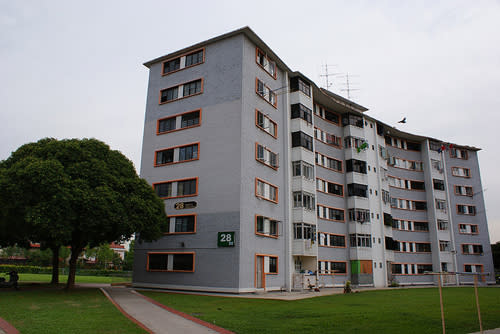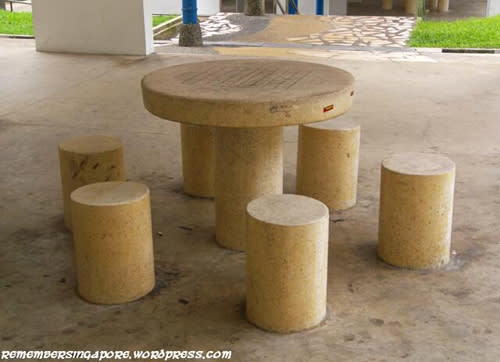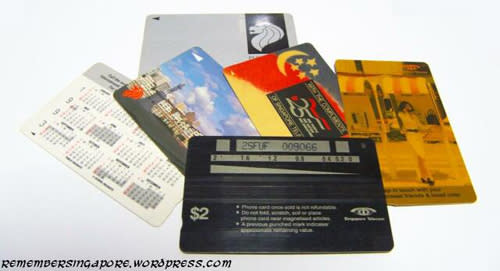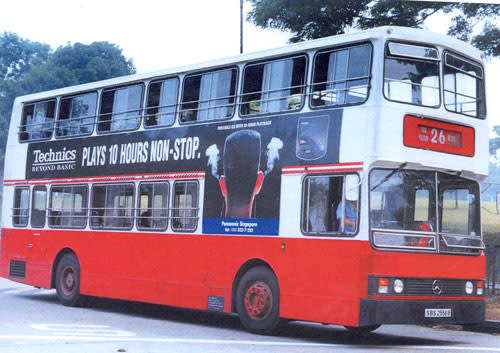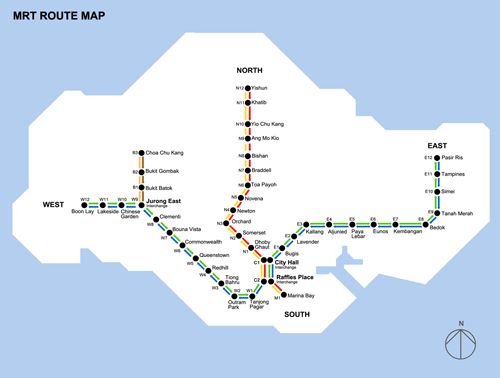Remembering childhood in Singapore (part 1)
Do you remember the days when mobile phones were as huge and heavy as a brick and pagers were popular? Or the days when you enjoyed the breeze brushing against your face as you sat near the windows of one of those old non-air-conditioned SBS buses?
If any of these seems familiar, you are probably a Singaporean who had your childhood in the 80s or early 90s.
Yahoo! Singapore has collaborated with Remember Singapore to come up with a three-part compilation of some of the things you would have probably encountered, played, watched, ate or read during your childhood. Enjoy!
For the first part, take a look at how surroundings and transport in Singapore have changed.
Old-style HDB flats
(Photo courtesy of Tropical Passage)
HDB flats then weren't aesthetically appealing, but they were considerably cheap, costing less than $50,000 for a 3-room unit. And lifts didn't stop at every floor at that time.
Sand-based playgrounds
(Photo courtesy of Justin)
Many adult Singaporeans now would have fond childhood memories of these locally-designed dragon and pelican playgrounds often found near HDB housing estates. Unlike present playgrounds that are made of rubber, conventional ones were usually sand-based. Many of such playgrounds were torn down since the late nineties.
Stone tables
(Photo courtesy of Remember Singapore)
Another common facility found at old flats that provided a relaxation corner for the old folks -- the round white stone table with six stone stools. The surface of the table was also carved with the layout of a Chinese chess or International chess. Many of these stone tables became obsolete and were replaced by metal-framed ones.
Table tennis tables
(Photo courtesy of Remember Singapore)
Table tennis or ping pong tables were part of the common installations at the void decks of flats at old estates such as Ang Mo Kio and Hougang. They were once popular with students having a gem or two after school. While the facility was free, players had to bring their own net, balls and bats.
Phone cards & public phones
(Photo courtesy of Remember Singapore)
(Photo courtesy of Ericalba)
Mobile phones were expensive back then, so many resorted to using phone cards and public phones to contact their friends or family members. Introduced in the early nineties, the early plain phone card designs used colors to differentiate the values of the cards, such as a $20 phone card was in silver whereas the $50 one was gold. Soon, there were many designs, some portraying Singapore landscapes, food, culture and traditions.
Pagers
(Photo courtesy of jseft)
Beep beep beep beep! Remember the days when you had to rush to a public phone to return a call once you receive a 'beep' on your page? In the past, you would often see men carrying pager pouches clipped onto their belt.
Area Licensing Scheme
(Photo courtesy of Reinventing Urban Transport)
The Area Licensing Scheme (ALS) was first introduced in 1975 to reduce rush hour traffic congestion in the city area. It required a driver to purchase a special supplementary license, and display it on a car that was driven in designated Restricted Zones during the rush hours. Gantries were monitored by auxiliary police officers who carried out visual checks and recorded any violations, and fines were stiff -- $70 then.
However with advancements of technology, the Singapore government in 1999, took down the ALS gantries and replaced them with the newer and automated Electronic Road Pricing (ERP) gantries.
Non-air-conditioned buses
(Photo courtesy of Jeremy Sng)
SBS buses used to be non-air-conditioned only, and the seats were made of wood and the cushion was red. Passengers could actually push open the windows and feel the breeze hitting against your face.
Fare cards
(Photo courtesy of Jeremy Sng)
There were no EZ-Link cards back then, so passengers had to insert their card into the fare card machine in the bus, which would then produce a ticket from the bottom. The adult fare cards had a blue back, children's ones had a red back, and the back of senior citizens' cards were purple. And there were many designs to collect.
Old MRT map
(Photo courtesy of Wikipedia)
Established in 1987, it was known as MRTC (Mass Rapid Transit Corporation) then. In its early days of operation, it served only five stations (Yio Chu Kang, Ang Mo Kio, Bishan, Braddell, and Toa Payoh) in the North-South Line. The system, known as SMRT since 2004, has now expanded to four lines throughout Singapore.
Sentosa Monorail
(Photo courtesy of ashkyd)
The current Sentosa Express light rail system, which provides easy access from HarbourFront Center to Sentosa Island and vice-versa, is fully air-conditioned and is computerised. Previously known as Sentosa Monorail, it was a straddle-beam monorail that housed 14 non-air-conditioned cars in one train. It operated from 1982 to 2005.
Want to indulge in more nostalgia? Don't forget to check out our second and third parts of this series over the next several days.
The writer is a 17-year-old student and technology blogger who loves social media and gadgets. He is also Singapore's top Twitter user with over 220,000 followers.

